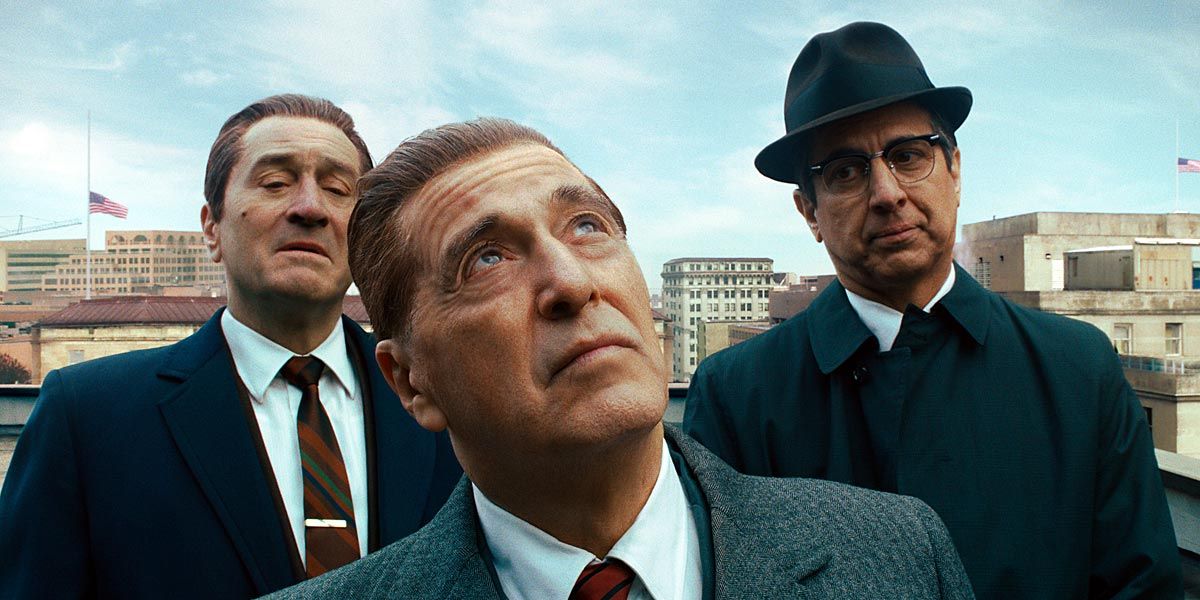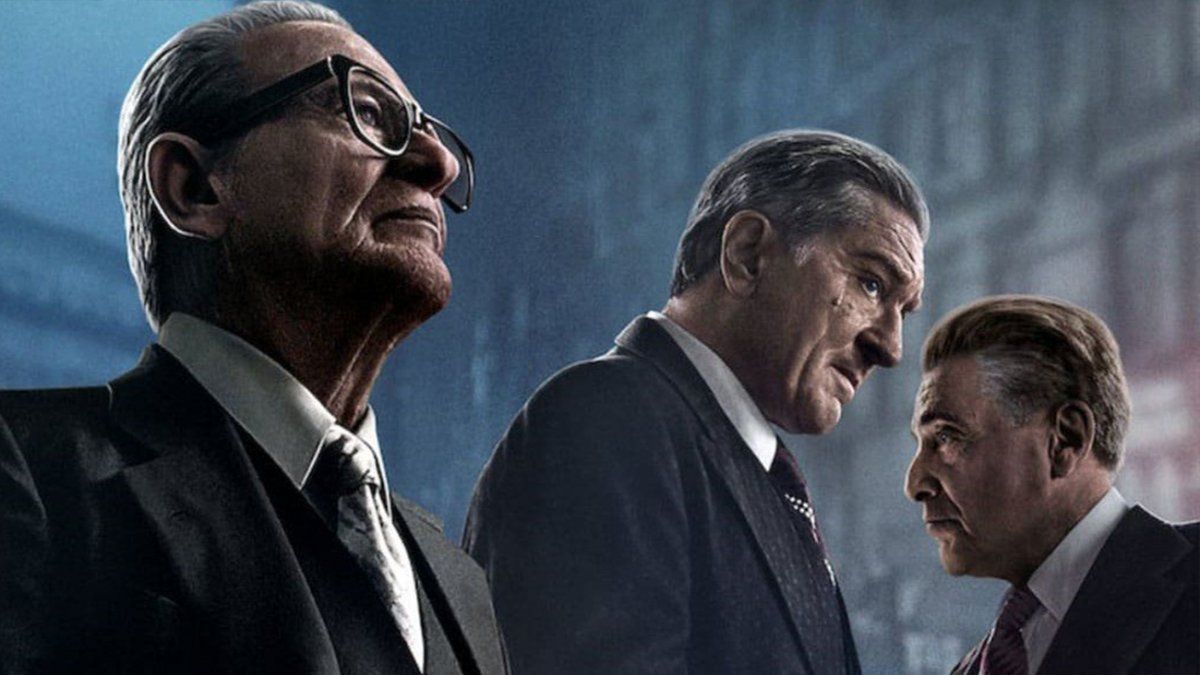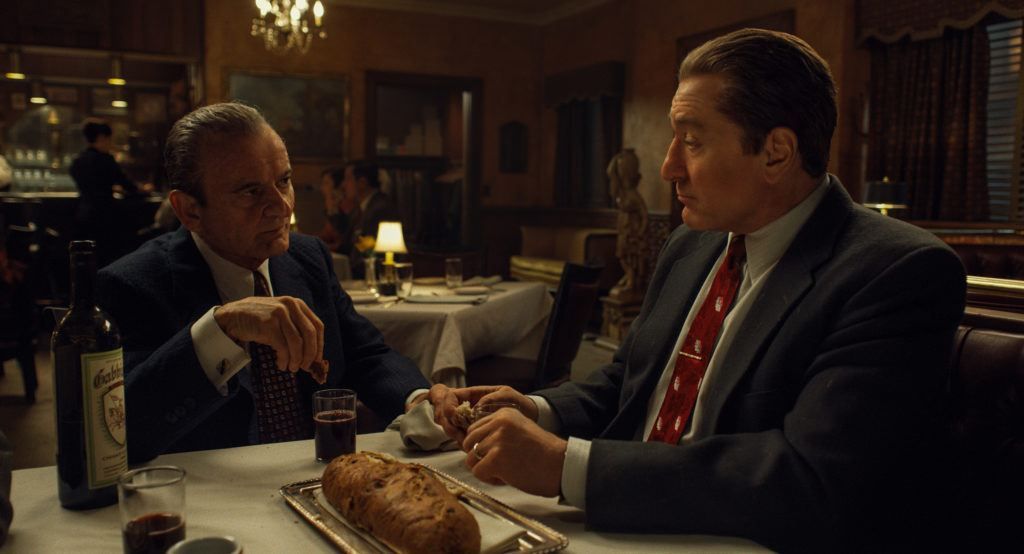If you're in a large city, Martin Scorsese's The Irishman has been playing at independent theaters for at least a couple of weeks. For everyone else, it's now streaming on Netflix. Scorsese, who's been making a big deal defending the theatrical experience for films that aren't "theme park" movies, would obviously prefer you see The Irishman on the big screen if you can. As for your preferred viewing experience, it probably depends on your attention span, and your bladder: The theater is your best bet for enjoying the three-and-a-half-hour film in one go, distraction-free, but streaming is convenient if you need to create your own intermission.
The Irishman is as far from a "theme park" movie as productions with a budget of more than $100 million are allowed to be. Compared to Scorsese's past crime films, with their thrills and their sense of the alluring side of sin, The Irishman is more restrained. There's no classic rock needle-drops making everything cooler; much of the movie plays without any music. Where Goodfellas had its big dazzling tracking shot through the Copacabana, The Irishman's is through a retirement home. Where The Wolf of Wall Street's almost-as-lengthy runtime was used for a fast-paced sense of excess, The Irishman creates a much slower rhythm, still involving, but certainly feeling, its length.
The Irishman is not about the glamor of being a gangster, but the drudgery. It honestly glorifies organized labor more than it does organized crime; Jimmy Hoffa's big union rallies are filmed with more excitement than his mob dealings. The most dramatic moment of violence doesn't invoke horror so much as sadness. In a way it's kind of the custom-built gangster movie for this moment, when cultural commentators are so concerned with the potential for audiences to take morally complicated stories the wrong way.
This is also a movie that couldn't have been made at any other moment. It could only have been made by this director at this time in his life, starring two of his most frequent collaborators (Robert De Niro and Joe Pesci), and another actor with whom he's never worked but has dominated pretty much every other movie in this genre (this is actually Al Pacino's first Scorsese film). It needed special effects to reach the level they're at now, and it needed a studio willing to spend the cash to make it happen.
The three leads are fantastic, and seeing these legends play off each other is both the best reason to see the film and the likely reason it exists. De Niro is strong and subtle as Frank Sheeran, a hitman who can't even articulate the emptiness his life has left him with. Pacino's Jimmy Hoffa is larger than life, with the most comically profane dialogue. It's Pesci, leaving his two decades of semi-retirement to play the mob boss Frank Bufalino, who is perhaps the most impressive, playing against his usual short-tempered type as "The Quiet One."
All the more impressive is how these three men pull off these performances under various layers of digital deaging makeup. The effects work isn't as seamlessly photorealistic as Samuel L. Jackson in Captain Marvel, but it's also more convincing than Clark Gregg in Captain Marvel. Occasionally in the scenes where the men are significantly younger, it can look a little bit like a high-end video game cutscene, but the overall effect is believable enough that, after a certain point, you can forget you're even watching special effects.
You can compare the movie as a whole to Once Upon a Time in Hollywood, both films from aging auteurs preoccupied with the appeal and pitfalls of old-school masculinity and the minutiae of the culture they grew up around. Both are historical epics told in episodic structures. They also place historical accuracy on the sidelines for the sake of drama; where Tarantino changes history to suit his provocative fairy-tale ending, Scorsese looks at open questions and conspiracy theories and provides specific answers that might not be what really happened, but instead what its unreliable narrator claimed happened.
The Irishman is certainly a work of cinema, however you want to define it. As a work of entertainment, it has enough drama and humor to keep viewers invested. Despite the impressiveness of its artistic accomplishments, it's not the greatest film of the year, nor is it Scorsese's best. And, yeah, it probably could have been shorter (the last half-hour has some beautiful moments but also really could have been tightened). Still, anyone with an interest in crime movies should find a lot to appreciate in this end of an era epic.
One last weird note: For a movie titled The Irishman, Scorsese seems to have really wanted to title this movie I Heard You Paint Houses, after the Charles Brandt book used as source material. That title is the one that appears at the start of the movie, and it appears alongside The Irishman in the end credits.
The Irishman is now in limited theatrical release and streaming on Netflix.



